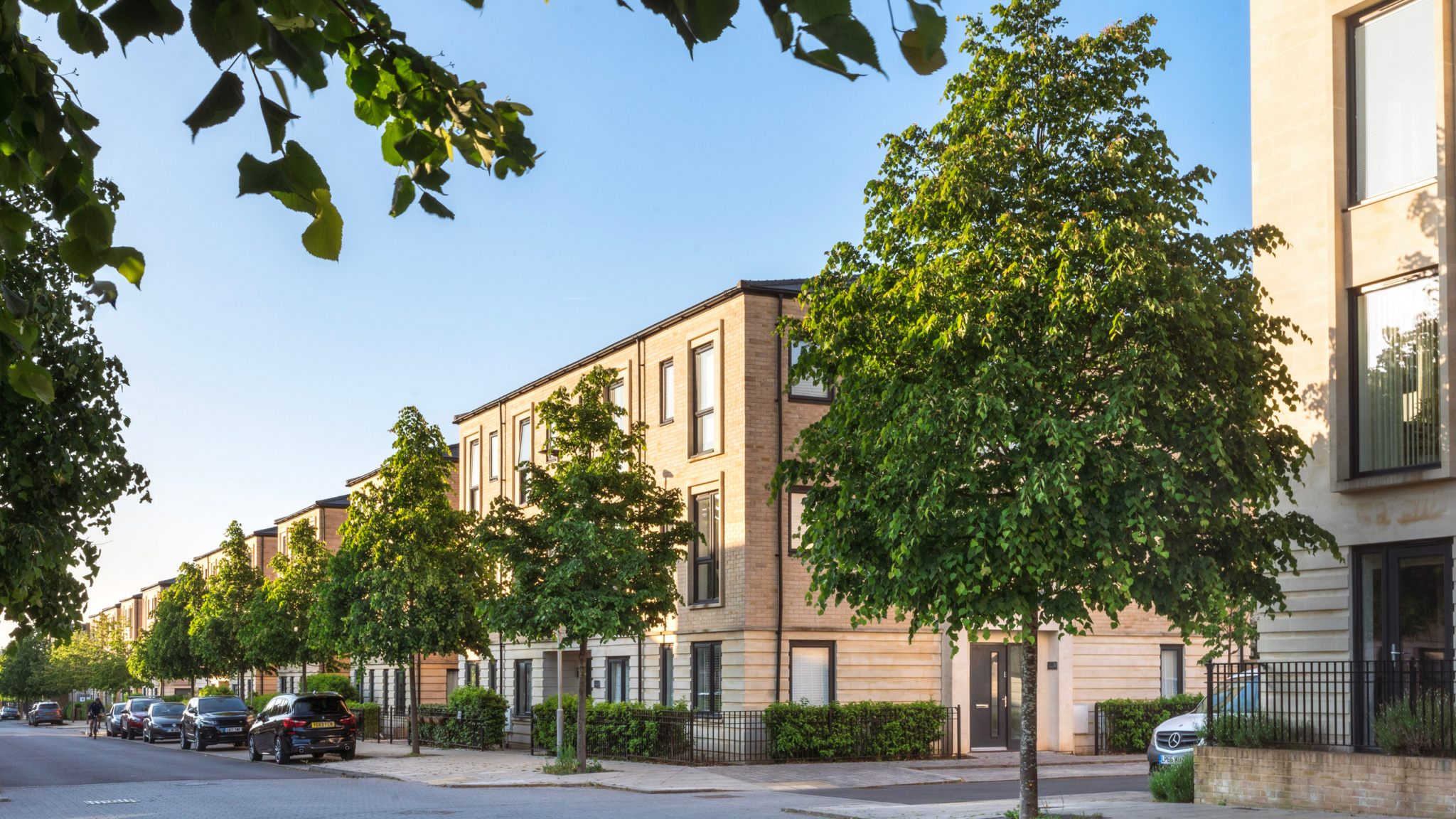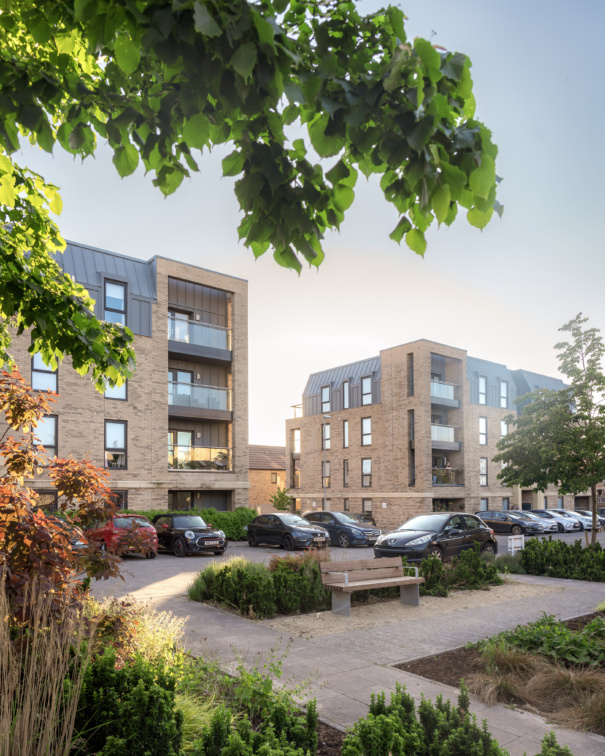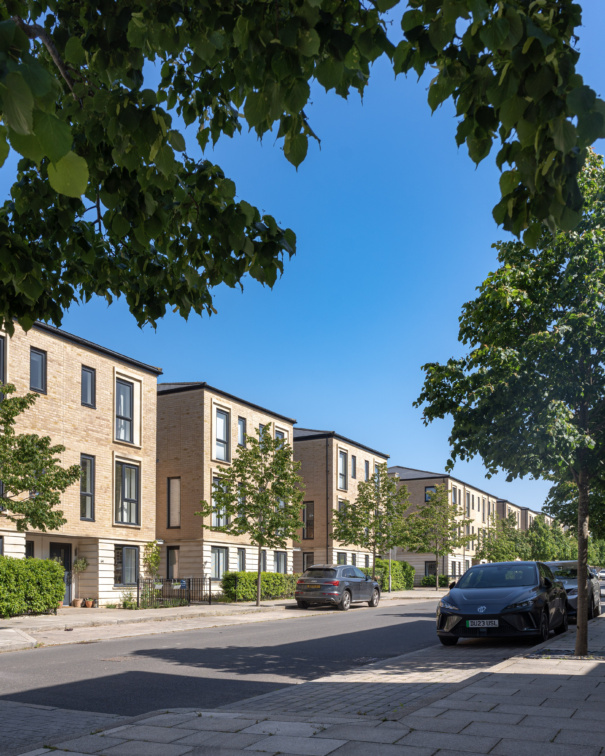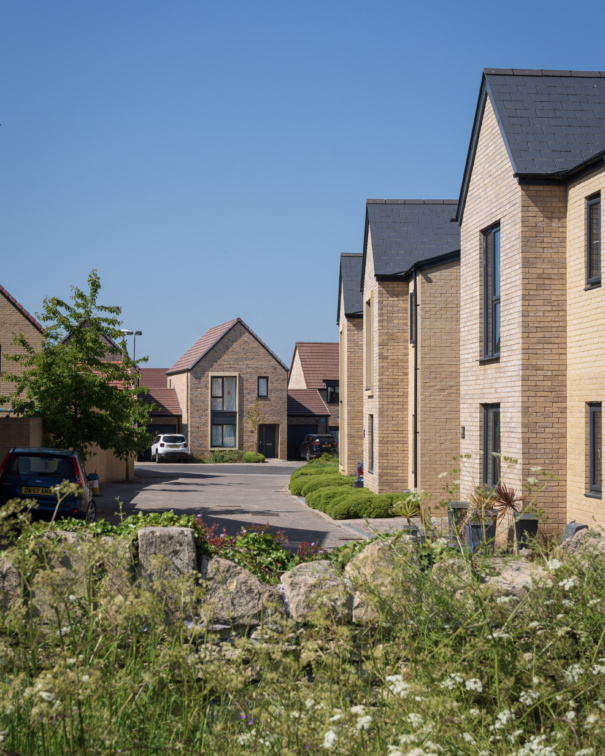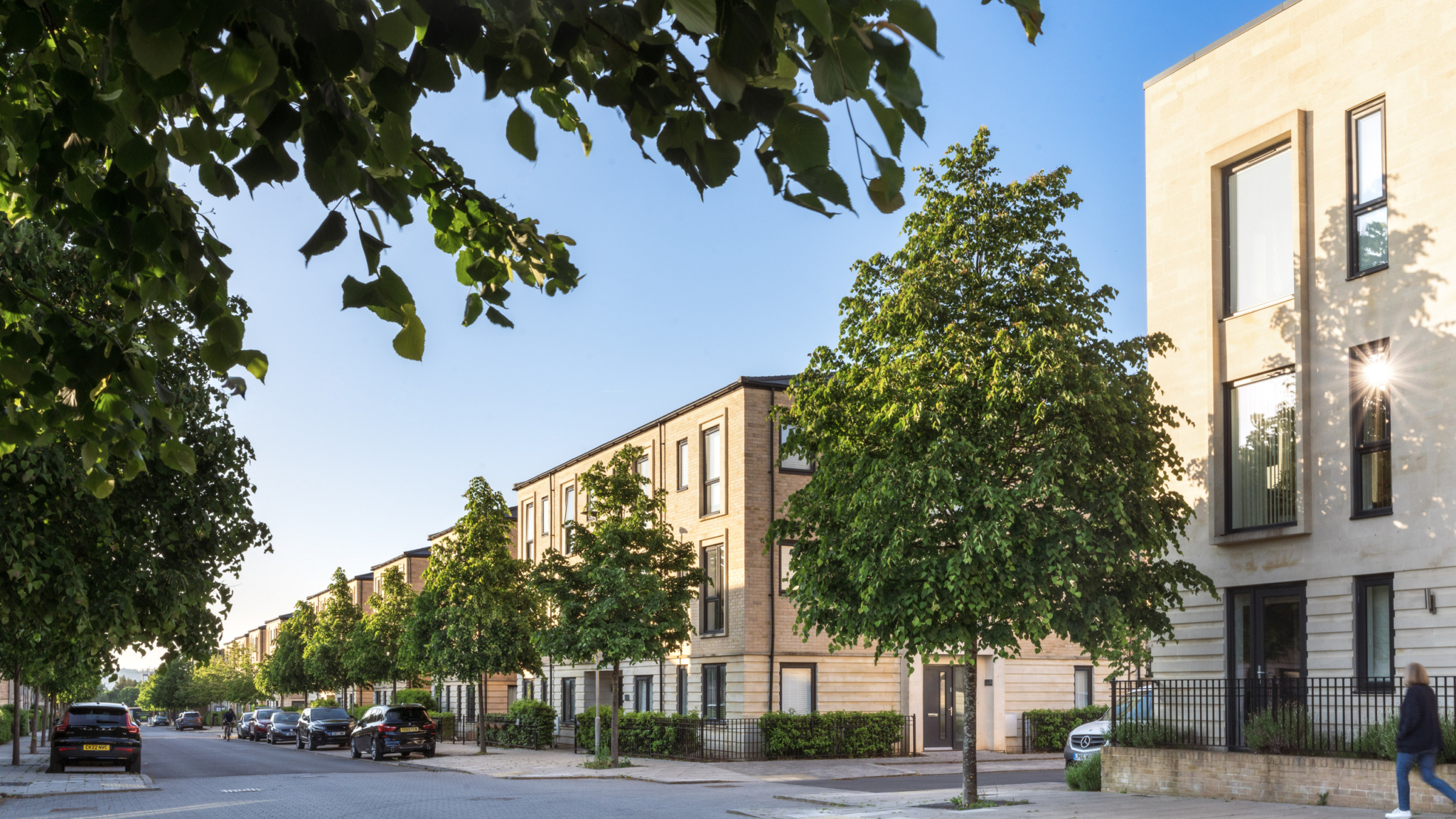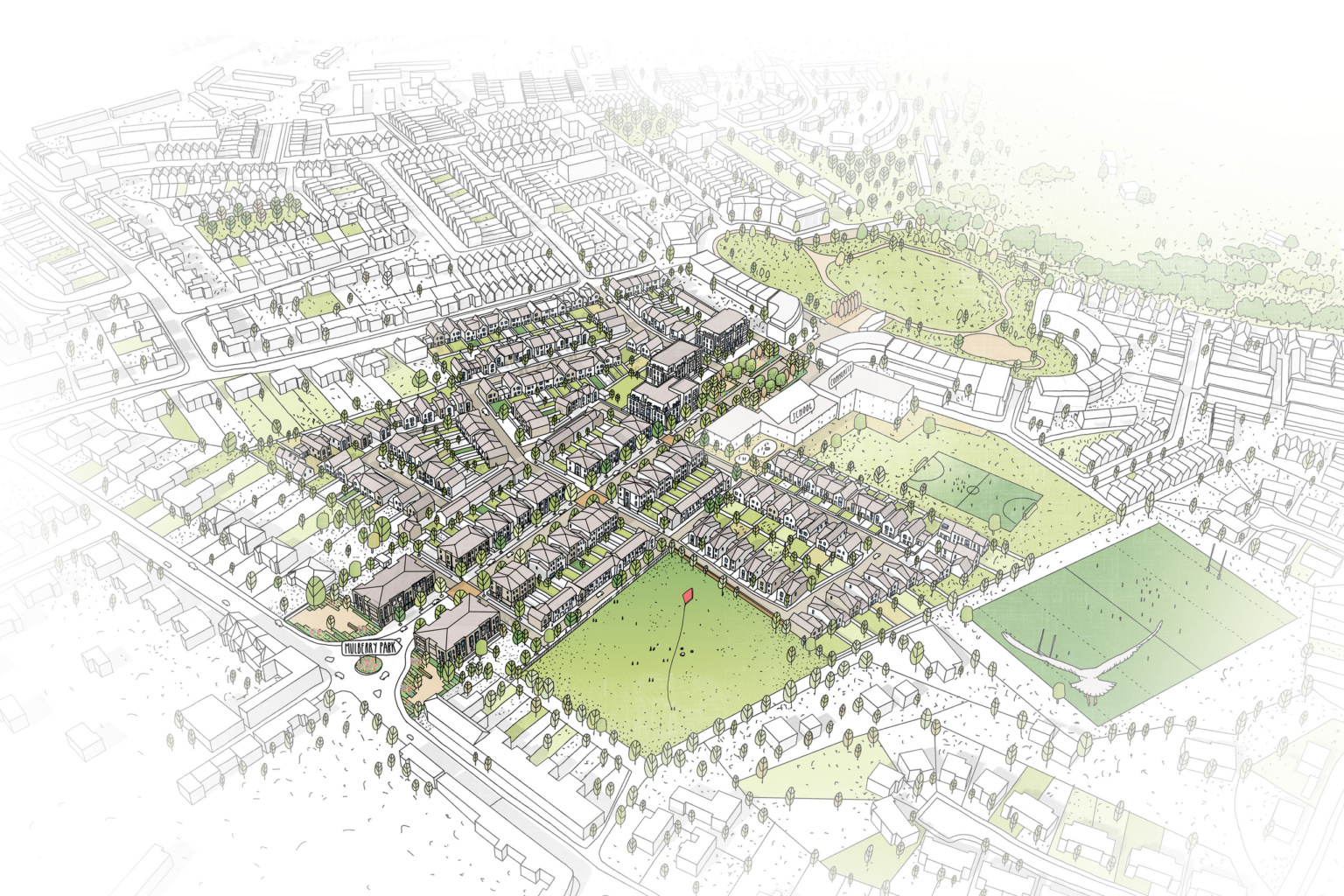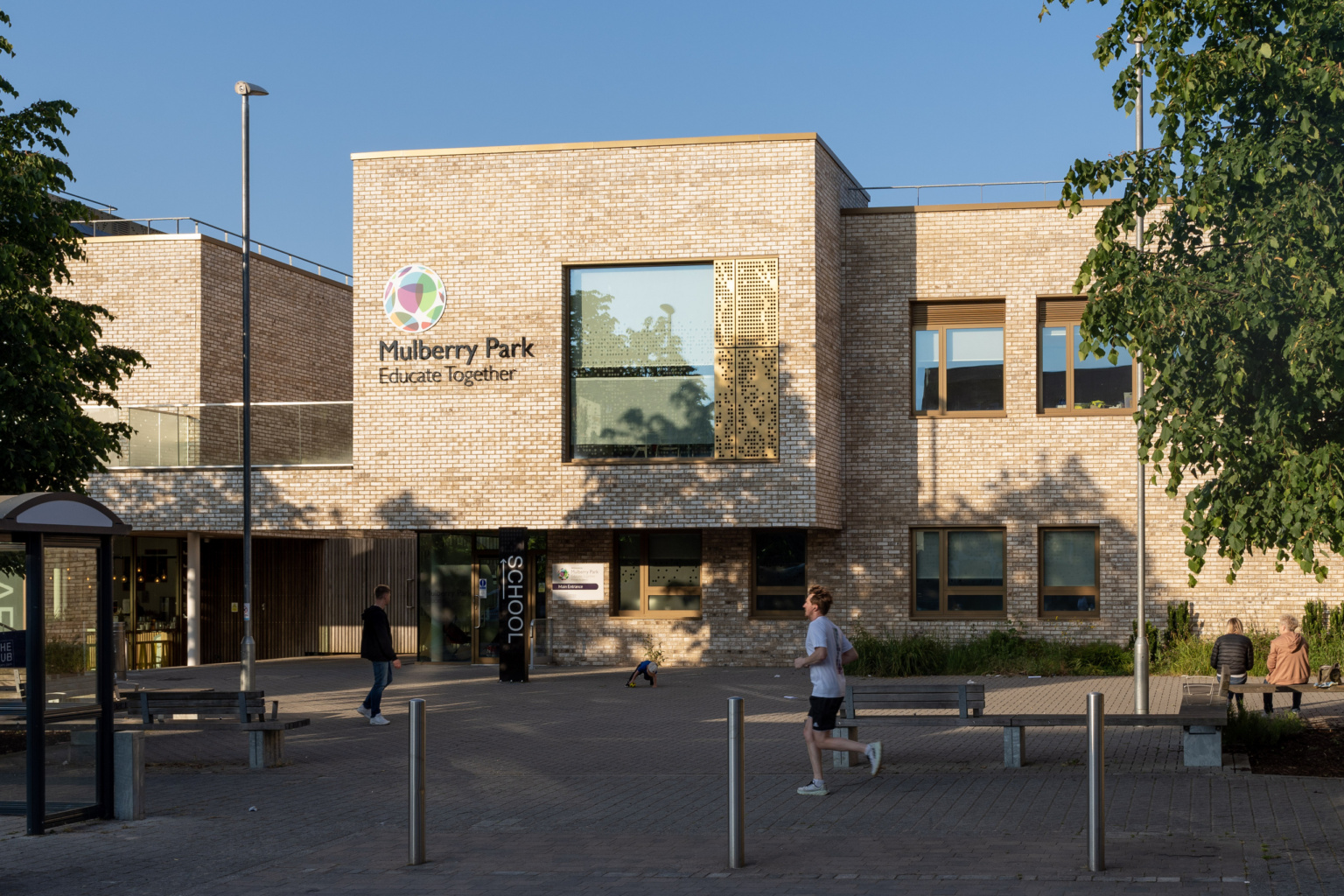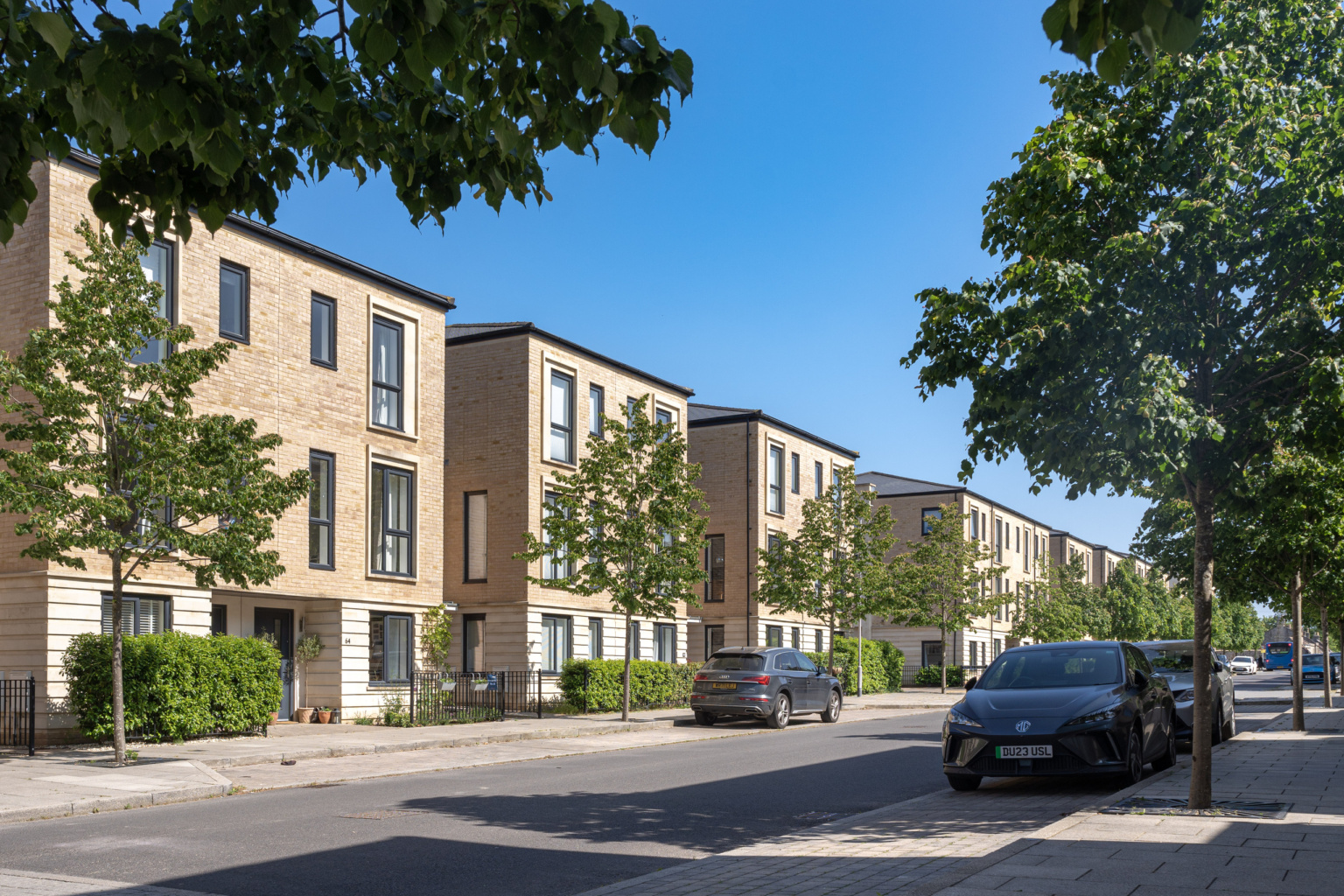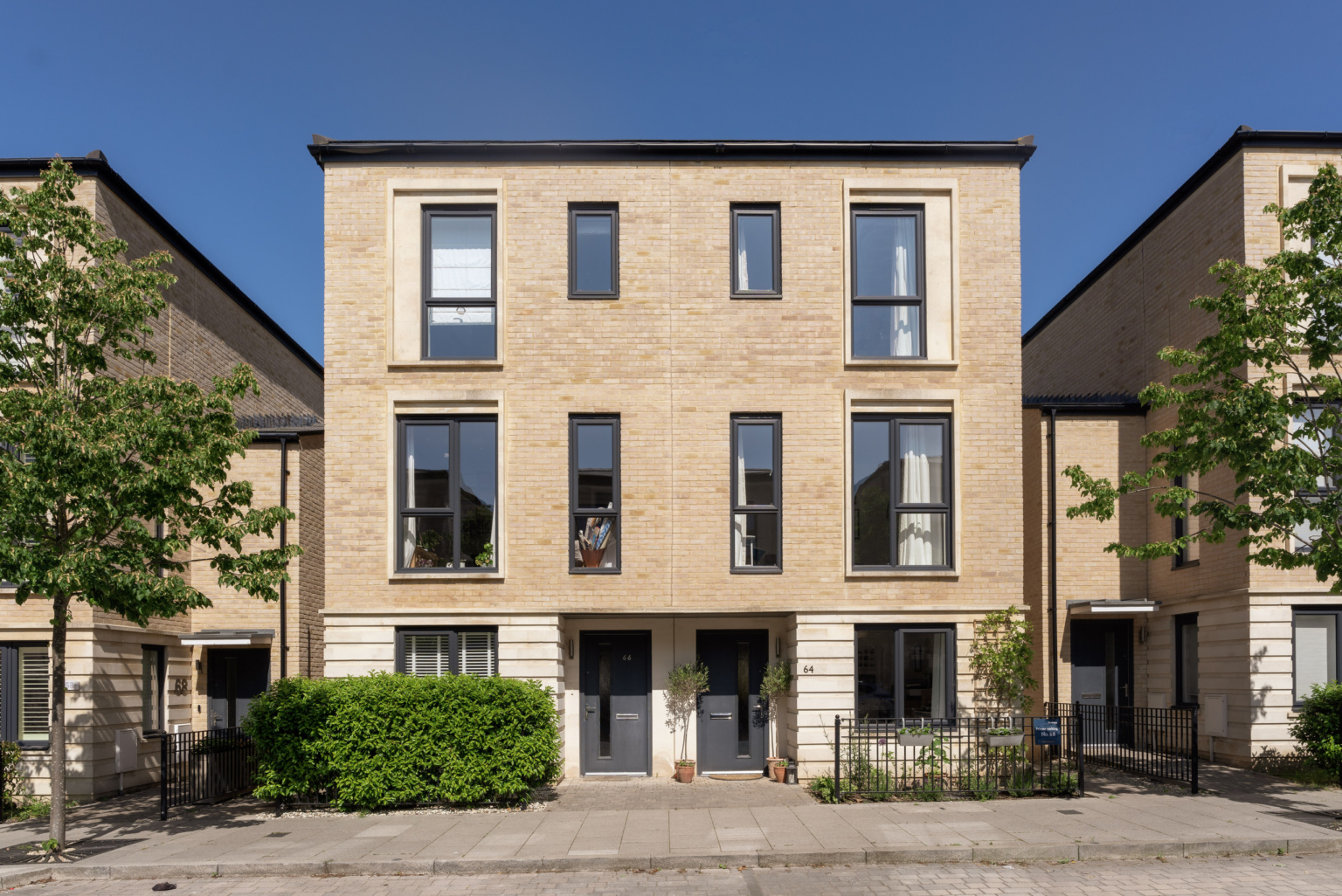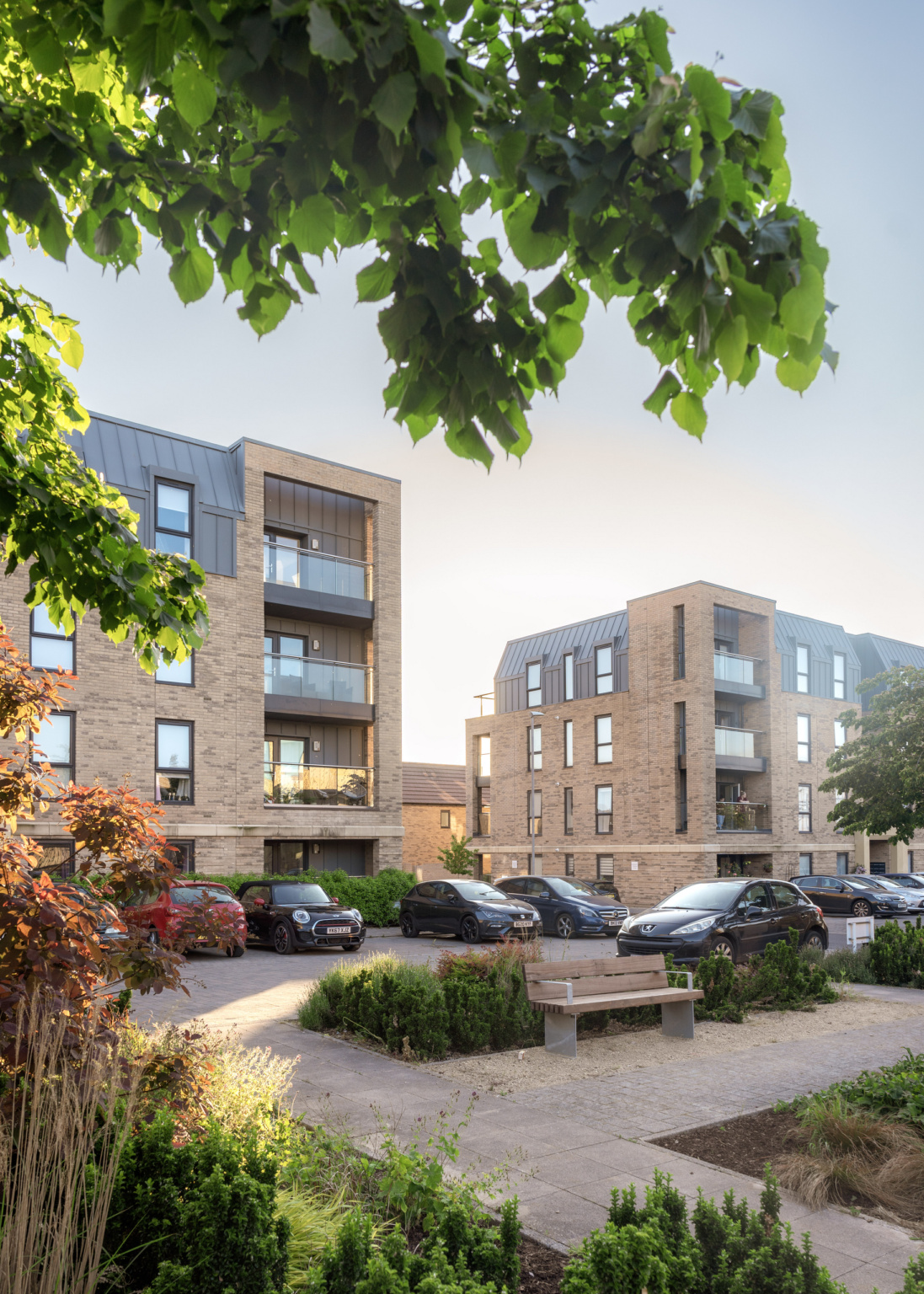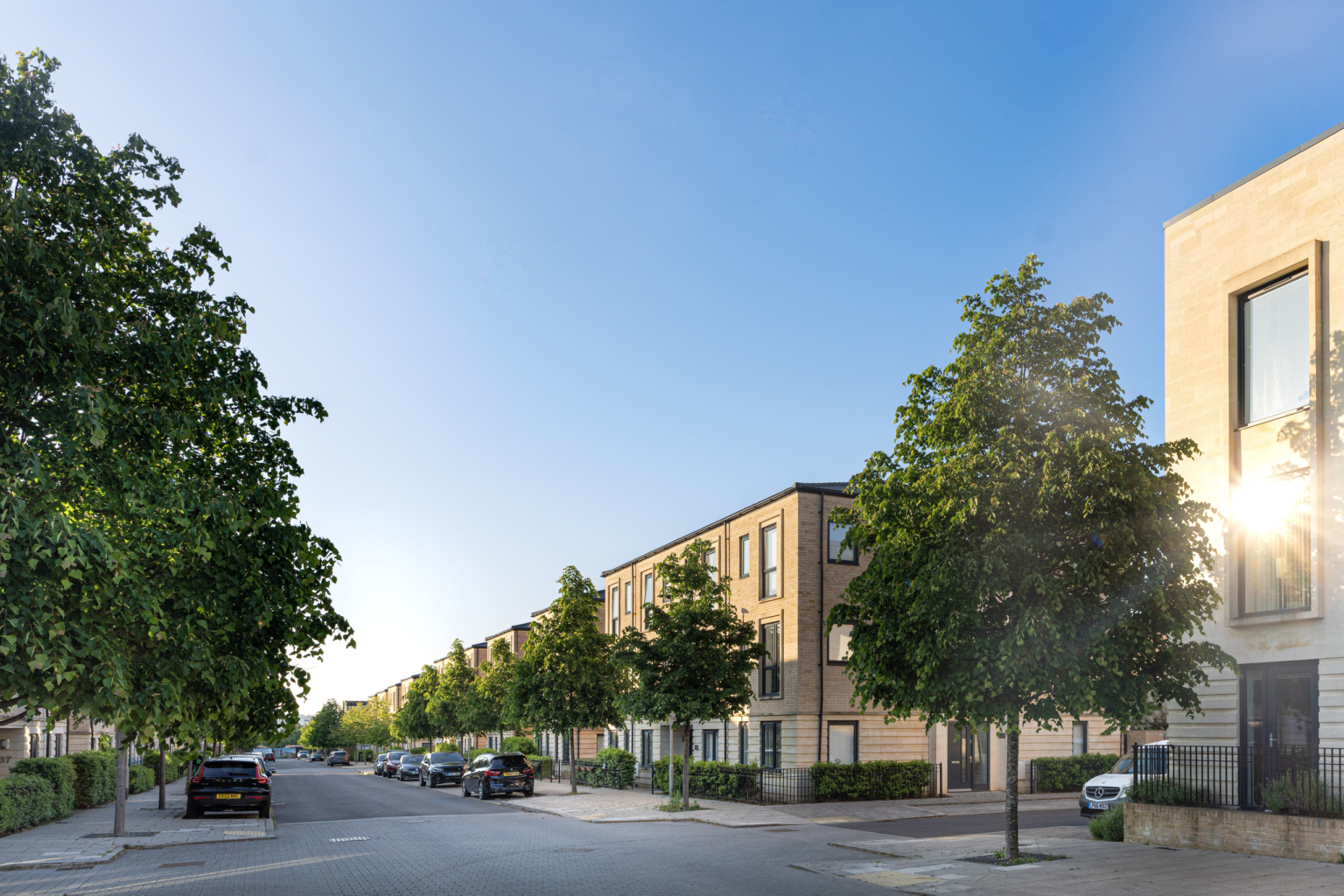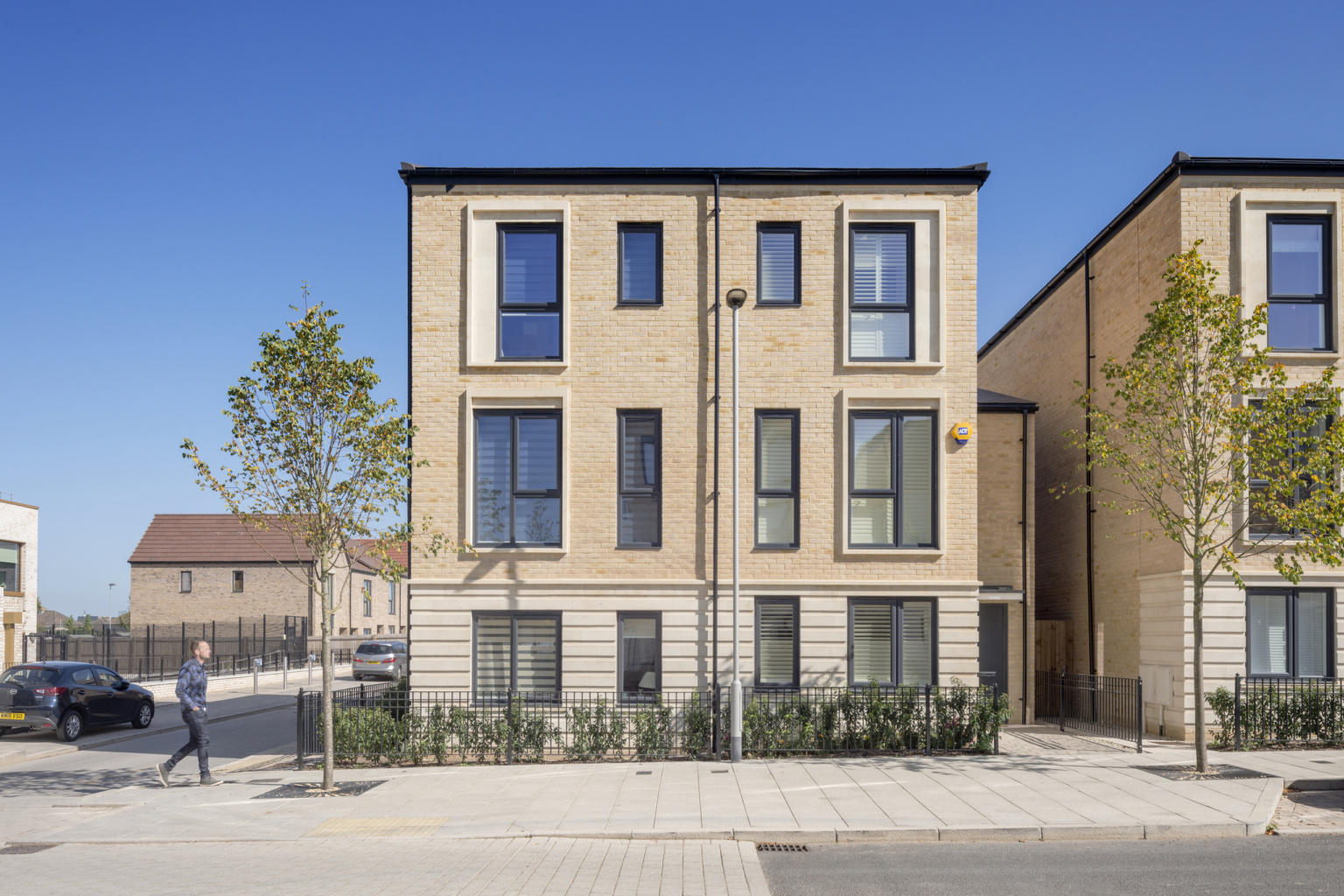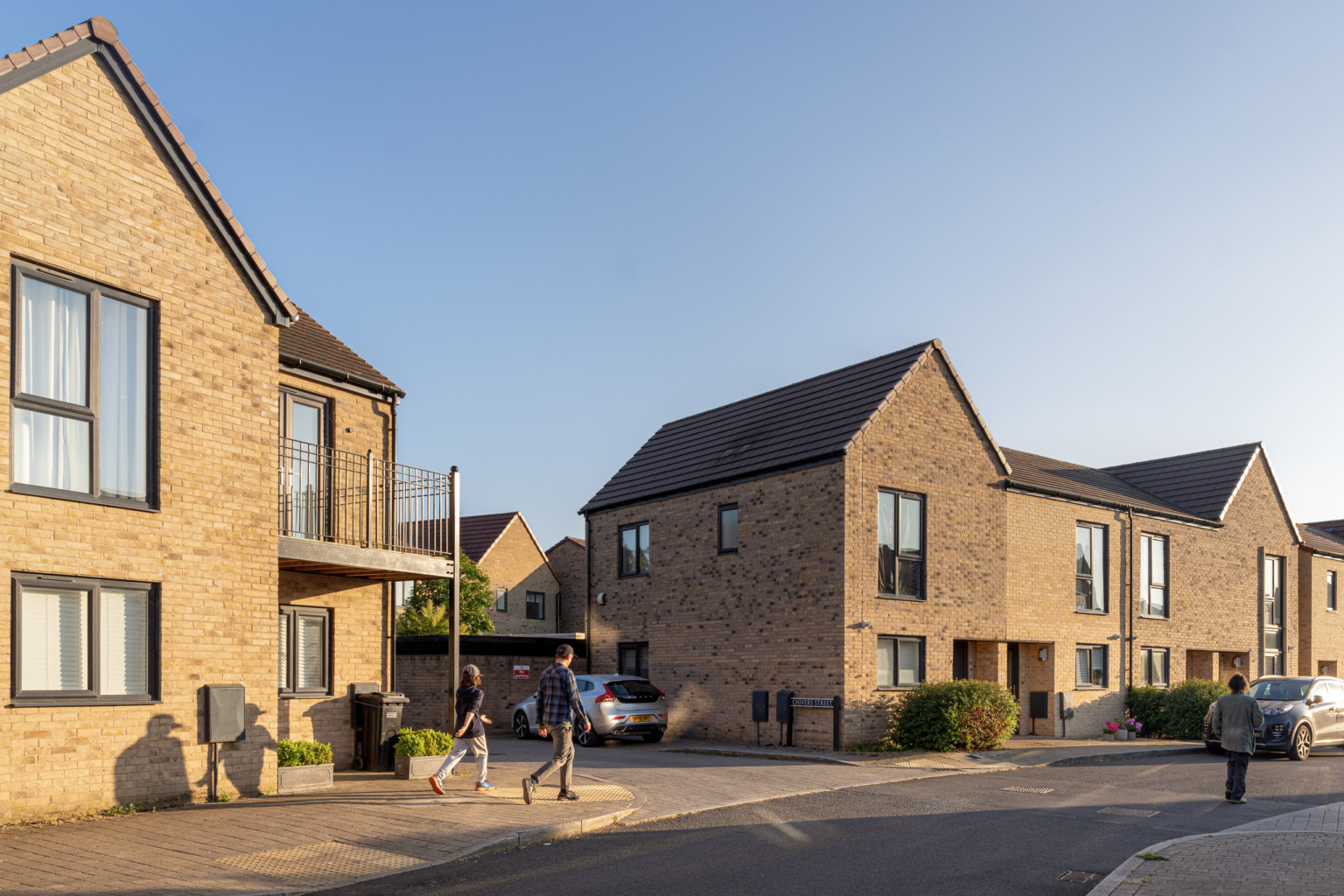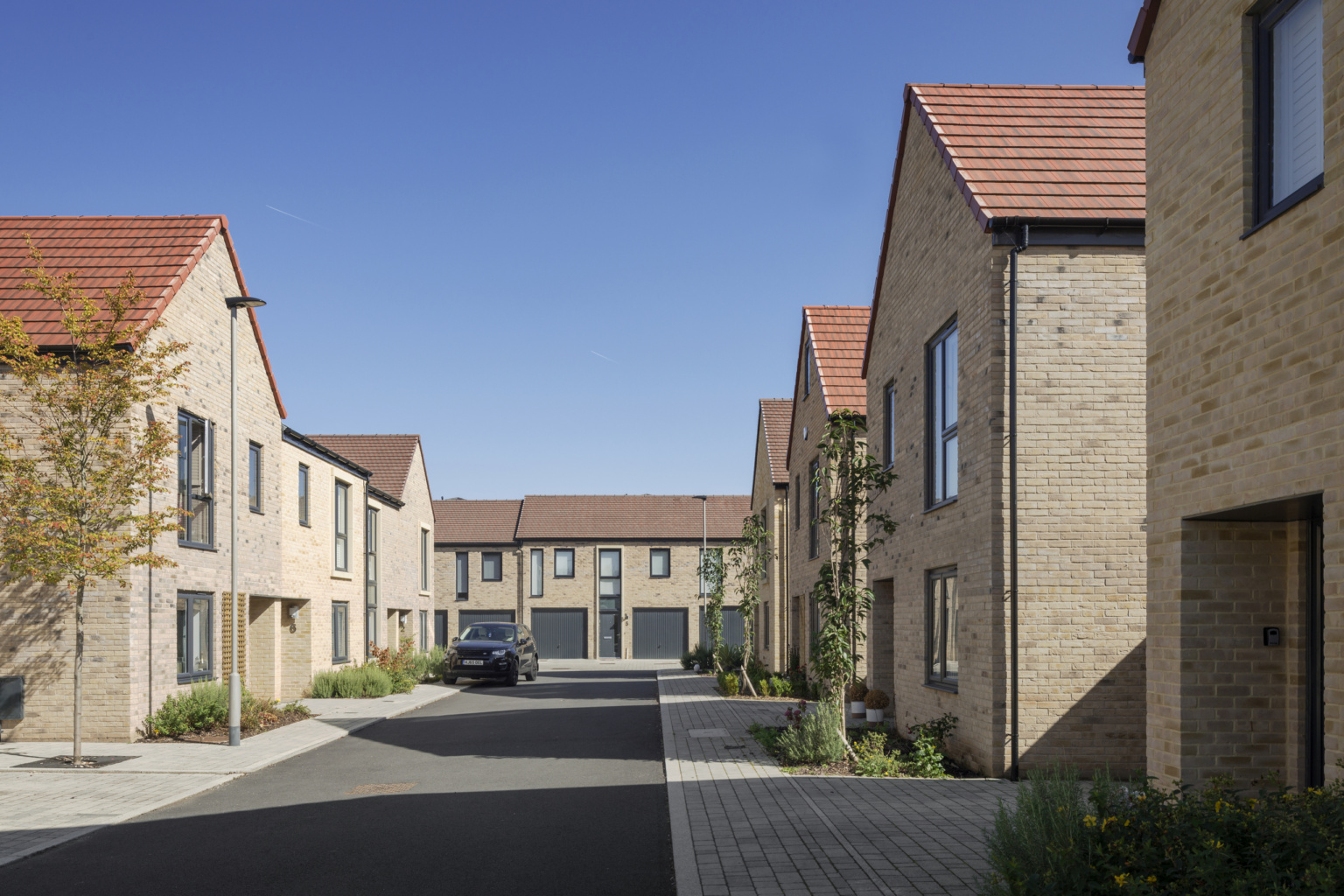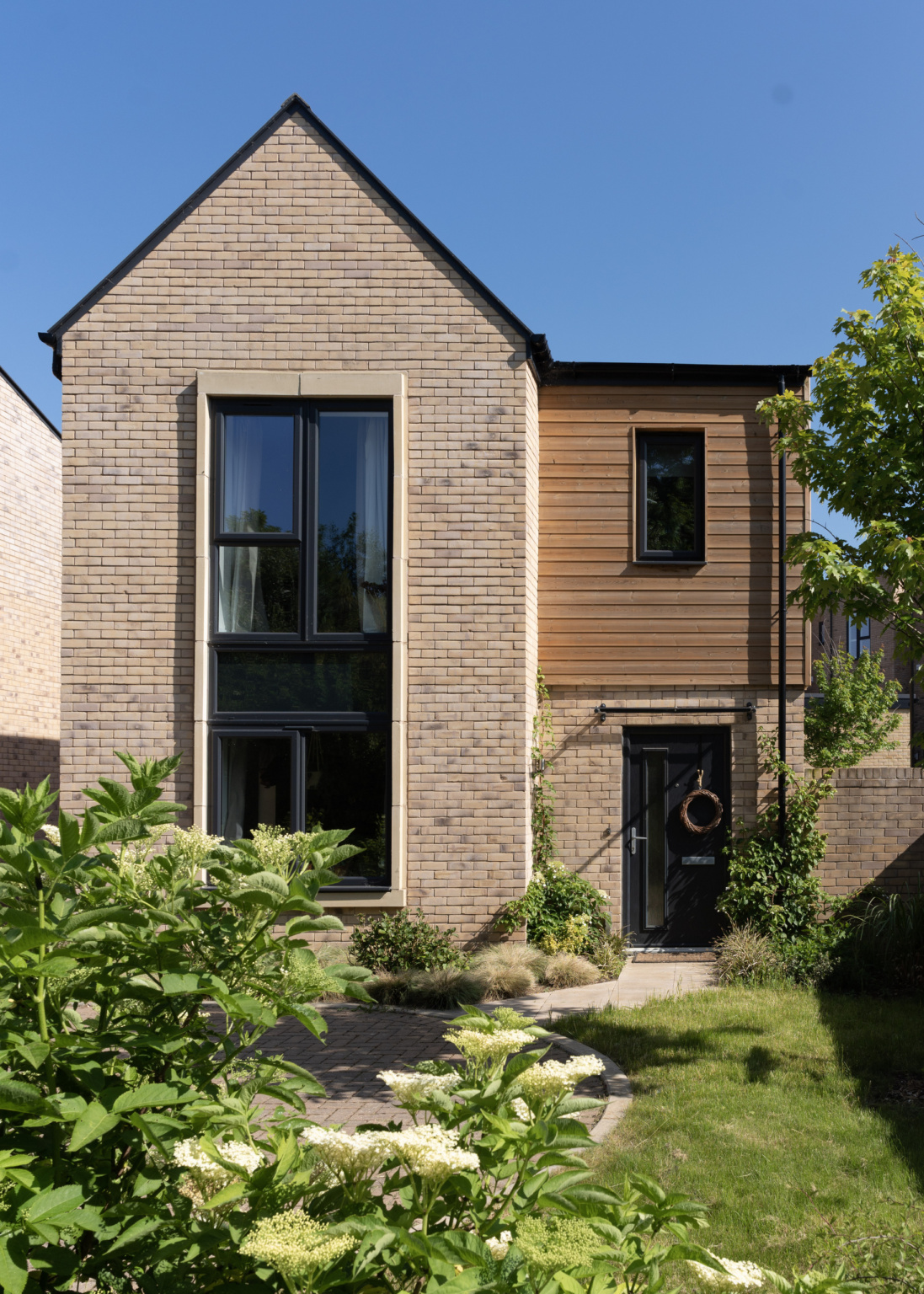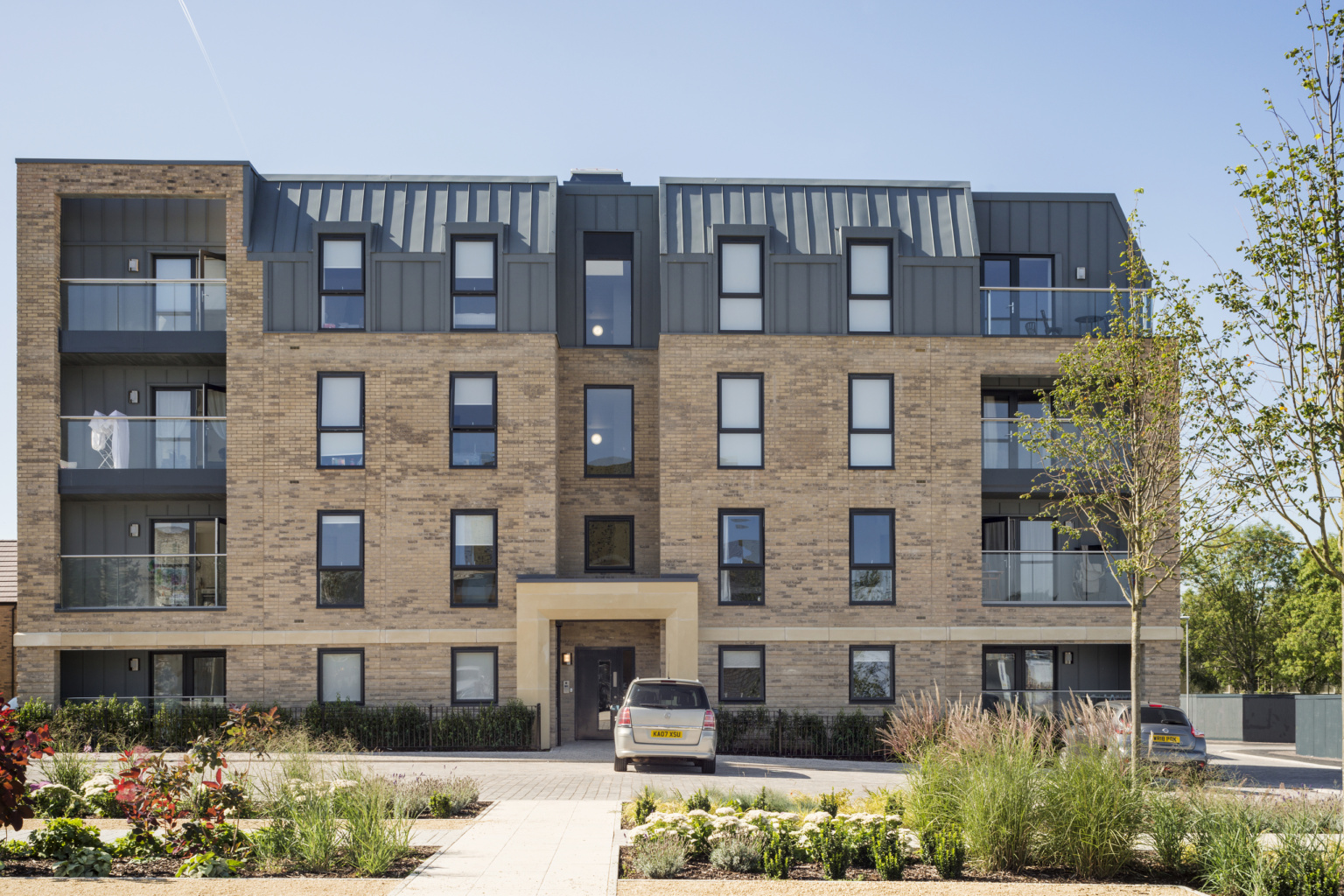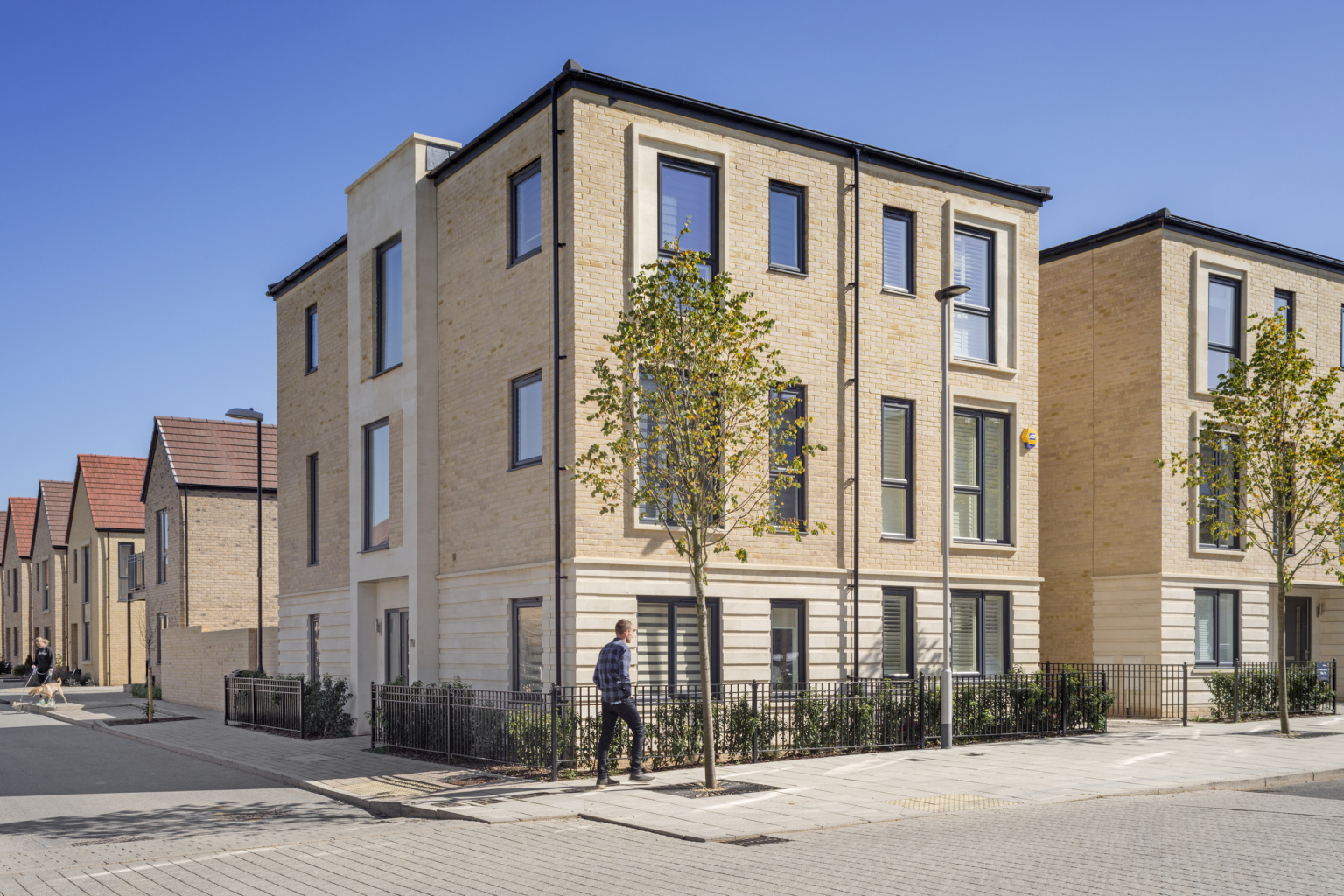What was the vision for Mulberry Park?
Nestling within the semi-rural village setting of Combe Down, Mulbery Park Phase 1 comprises 275 homes from 700 consented in the 2015 Outline Planning permission, and establishes a gateway to the development from Bradford Road, as well as connecting to the adjacent Foxhill estate.
The concept for Mulberry Park is to establish a new model for achieving greater density in suburban developments, adapting the qualities of traditional housing typologies so prevalent in the city of Bath, to meet the needs of contemporary family living. The scheme includes a new primary school and community centre, designed by BDP, which we located at the centre of the masterplan, with new shops and facilities included within phase 2, enabling existing bus routes to be extended through the site and increased in capacity.
What is the significance of the central avenue in relation to the overall layout and connectivity?
Around 70% of the homes are family houses with 30% of the homes being affordable, tenure blind and distributed throughout the scheme. The central avenue linking to a new park uses stepped terraced villas to accentuate the significant falls across the site, and exploit the views to the historic heart of Bath. Enhancement of an existing local park and a new park at the heart of the masterplan aim to increase the biodiversity of this previously developed brownfield site.
Two apartment buildings announce the new neighbourhood to Bradford Road and mark the start of a central tree lined Avenue into the site. Three storey townhouses arranged in paired villas and short terraces frame the Avenue symmetrically.
The avenue helps establish a clear hierarchy of streets, along with a civic square fronted by apartment blocks and the new school to create a moment of arrival that aids orientation. Quieter streets and mews extend from the avenue with building frontage designed to aid orientation and create more active playable spaces.
The internal arrangement of the townhouses is designed to offer flexibility to residents. The traditional townhouse arrangement of a first floor living room overlooking the street is given a modern addition with a family room opening to the rear garden. A flexible room to the street can be used as a study, guest bedroom or separate dining space.

